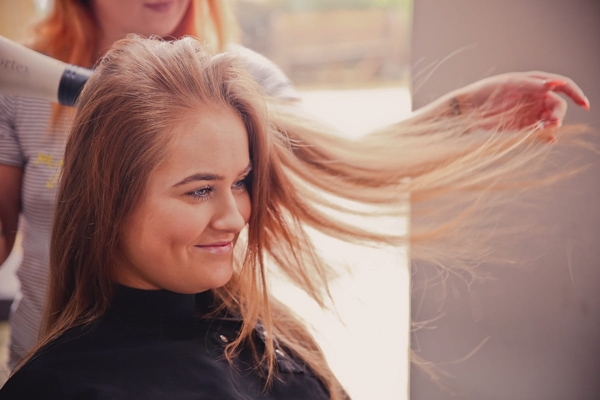 The first step in selecting hair extensions starts with knowing your natural hair texture and color. This knowledge helps blend extensions seamlessly with your existing hair. Fine hair needs lightweight options, while thicker hair accommodates various extension types. When matching colors, consider how different lighting affects the appearance throughout the day.
The first step in selecting hair extensions starts with knowing your natural hair texture and color. This knowledge helps blend extensions seamlessly with your existing hair. Fine hair needs lightweight options, while thicker hair accommodates various extension types. When matching colors, consider how different lighting affects the appearance throughout the day.
Types of application methods
- Clip in extensions offer versatility for occasional wear. These pieces attach with small combs that secure into your natural hair. The temporary nature allows styling flexibility while maintaining hair health. Many people choose this option for special occasions or when trying different looks.
- Tape extensions create natural movement through thin adhesive strips that sandwich your natural hair. The application process takes minimal time, though proper placement requires professional expertise. These extensions move naturally and feel comfortable during daily activities.
Sew in methods
Professional stylists weave extensions into tiny braids created close to the scalp. This technique provides durability and allows for various styling possibilities. The process begins with careful sectioning of natural hair, followed by precise braiding patterns that form the foundation for attachment.
Fusion bonding techniques
Individual strands attach using protein-based adhesives that protect natural hair. The application requires meticulous attention to detail, ensuring proper spacing between bonds. This method creates highly natural results when properly executed by trained professionals.
Hair extension materials
Human hair options provide the most authentic appearance and styling versatility. The cuticles remain intact and aligned, allowing for natural movement and shine. These extensions respond well to heat styling and coloring processes.
Synthetic alternatives have advanced significantly in recent years. Modern fibers mimic natural hair movement while requiring minimal maintenance. These options work well for specific styles and temporary wear situations.
Daily maintenance essentials
Proper brushing techniques maintain extension longevity and prevent tangling. Starting from the bottom and working upward helps detangle without causing stress to attachment points. Using appropriate tools designed specifically for extensions preserves their condition.
- Gentle detangling from ends to roots
- Section-by-section brushing approach
- Regular cleaning with appropriate products
- Careful drying techniques
Styling possibilities
Heat styling remains possible with proper precautions and protective products. Extensions allow experimentation with different looks while maintaining the health of your natural hair. Updos, braids, and various textures become accessible options with properly placed extensions.
Nighttime protection routines
Sleeping with extensions requires specific care approaches. Loose braiding or gentle securing prevents tangling during sleep. Silk or satin pillowcases reduce friction and maintain smoothness throughout the night.
Professional installation importance
Trained professionals ensure proper application techniques that protect natural hair. They assess individual needs and recommend appropriate extension types. Regular maintenance appointments help maintain optimal appearance and prevent potential issues.
Blending techniques

Creating seamless transitions between natural hair and hair extensions requires strategic layering. Professional cutting shapes the extensions to match natural hair patterns. This attention to detail ensures undetectable results.
Color matching expertise
The natural lighting provides the best environment for colour selection. Multiple pieces in slightly different shades create a dimension similar to natural hair. This approach ensures realistic results across various lighting conditions.
Extension removal procedures
Professional removal prevents damage to natural hair and allows for future installations. Each method requires specific techniques and tools for safe removal. Following proper procedures maintains scalp and hair health.
Hair density considerations
The amount of extensions used should complement natural hair density. Strategic placement creates balanced volume throughout the style. This careful planning ensures natural-looking results that move authentically.
Length selection guidelines
Choosing appropriate lengths depends on natural hair condition and desired results. Gradual transitions often create more natural appearances. The weight of extensions influences both comfort and durability.
Seasonal adjustments
Different climates may require varying maintenance approaches. Humidity levels affect both natural hair and extensions differently. Adjusting care routines helps maintain optimal appearance throughout changing weather patterns.
Extension lifespan factors
Regular maintenance extends the life of quality extensions. Proper cleaning and storage between uses preserves their condition. Following care guidelines protects your investment while maintaining appearance.
- Regular professional maintenance checks
- Proper storage when not in use
- Gentle handling during styling
- Appropriate product selection
Hair Extensions transforms styling possibilities while maintaining natural hair health. When properly selected and maintained, extensions provide versatility and confidence for various occasions and styles.

